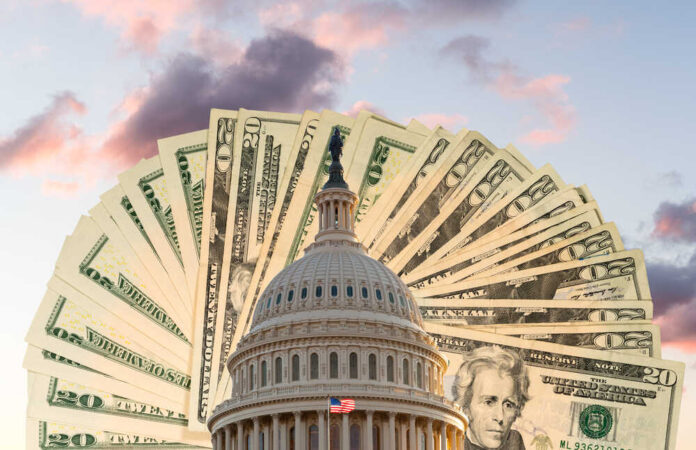Due to rising interest rates and falling tax revenues, the federal deficit in the United States is expected almost to quadruple this year.
According to new estimates from the Committee for a Responsible Federal Budget (CRFB), a nonpartisan group, the difference between what the federal government spends and what it takes in is expected to grow from one trillion dollars last year to two trillion dollars for the 2023 fiscal year that ends on September 30.
According to CRFB senior policy director Marc Goldwein, this would be the biggest deficit we’ve ever had apart from a national emergency or recession.
High inflation, more interest payments, and a decline in tax revenues contribute to the significant rise. After the federal government’s record expenditure during the COVID-19 epidemic in 2020 and 2021, the deficit plummeted to an all-time low of about $1 trillion in the previous fiscal year.
In 2022, it reaped the benefits of a jump in capital gains income as more Americans cashed in on the previous year’s flourishing market by selling shares at a profit. Since then, the stock market has not done as well, resulting in a steep decline in the capital gains tax collection compared to the previous year.
Since rising inflation effectively increased nominal earnings for millions of people, the Treasury Department also profited from a rise in general tax collection. The Internal Revenue Service eventually adjusts tax laws for inflation, but only after the fact.
Government expenditure on Medicare and Social Security has increased from the fiscal year 2022 because of inflation indexing.
According to a report, the purposely misnamed ‘Inflation Reduction Act,’ signed into law by President Joe Biden in August 2022, increased taxes on coal, natural gas, and oil and imposed a new tax on the financial statement profits of corporations.
Furthermore, the Biden administration had started phasing away former President Trump’s tax breaks.
That’s almost $60 billion in new taxes in 2023.
However, as of July 31st, tax collections are down over 400 billion dollars compared to last year’s period, a decline of 13%, and much more when adjusted for inflation.


















